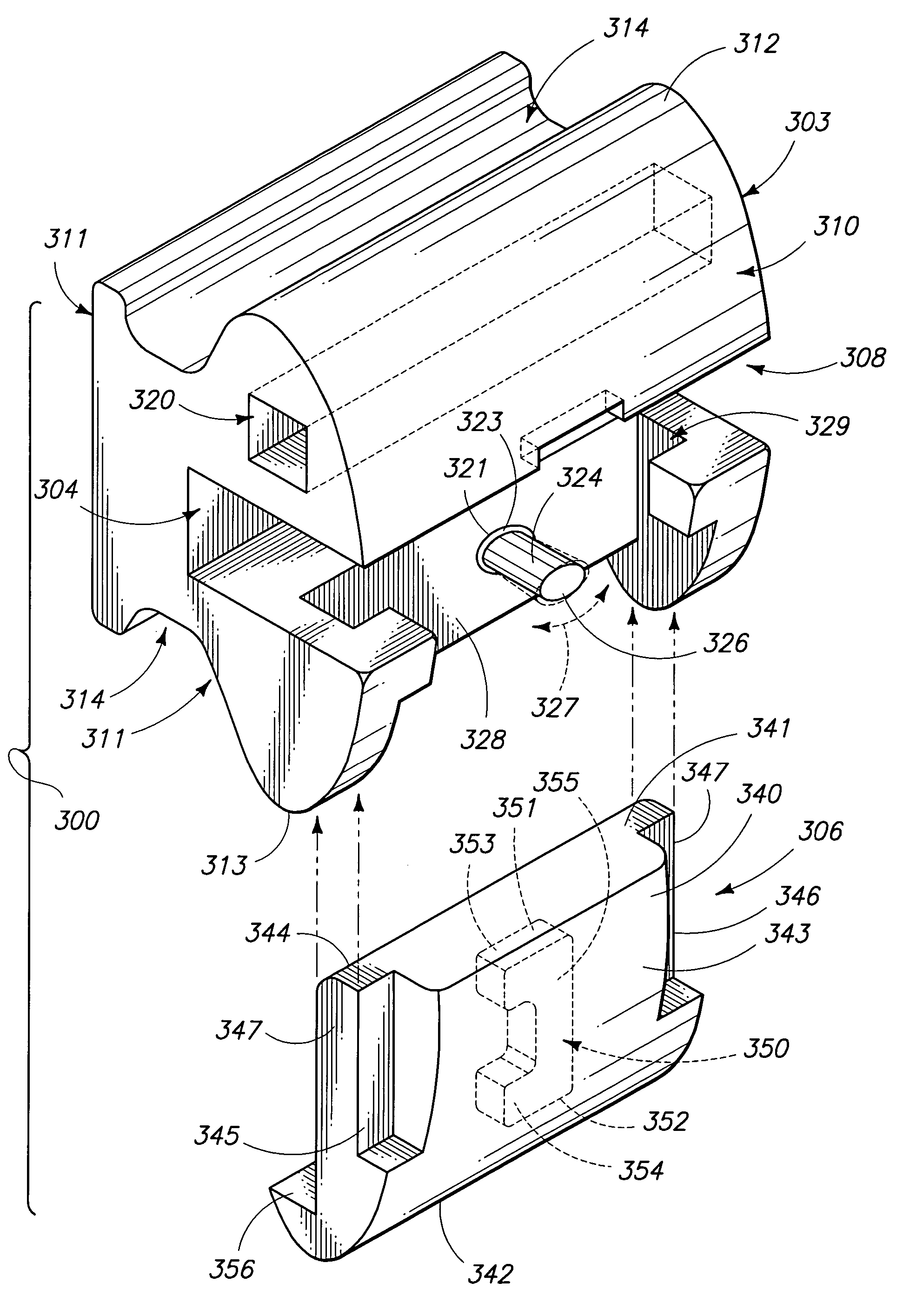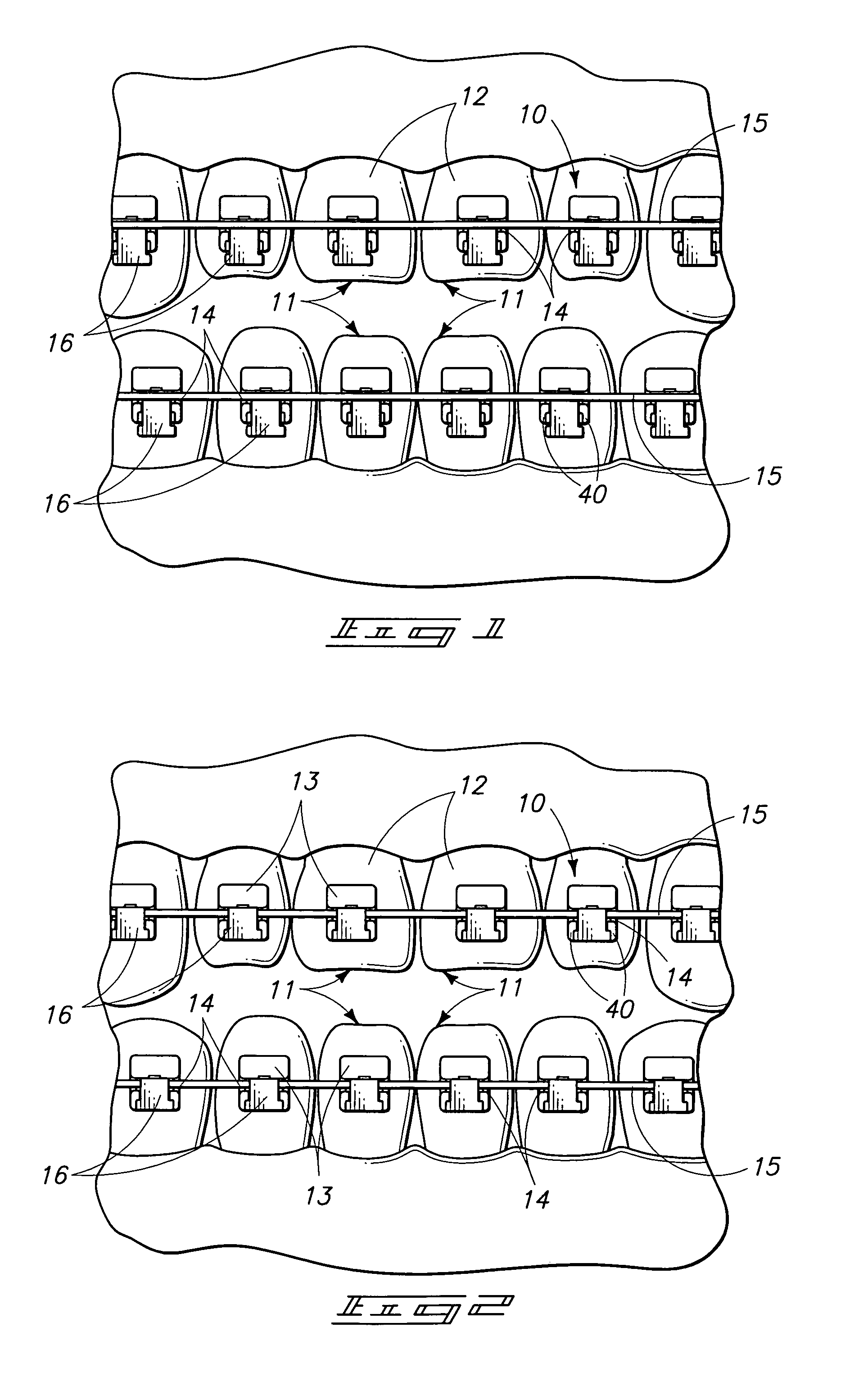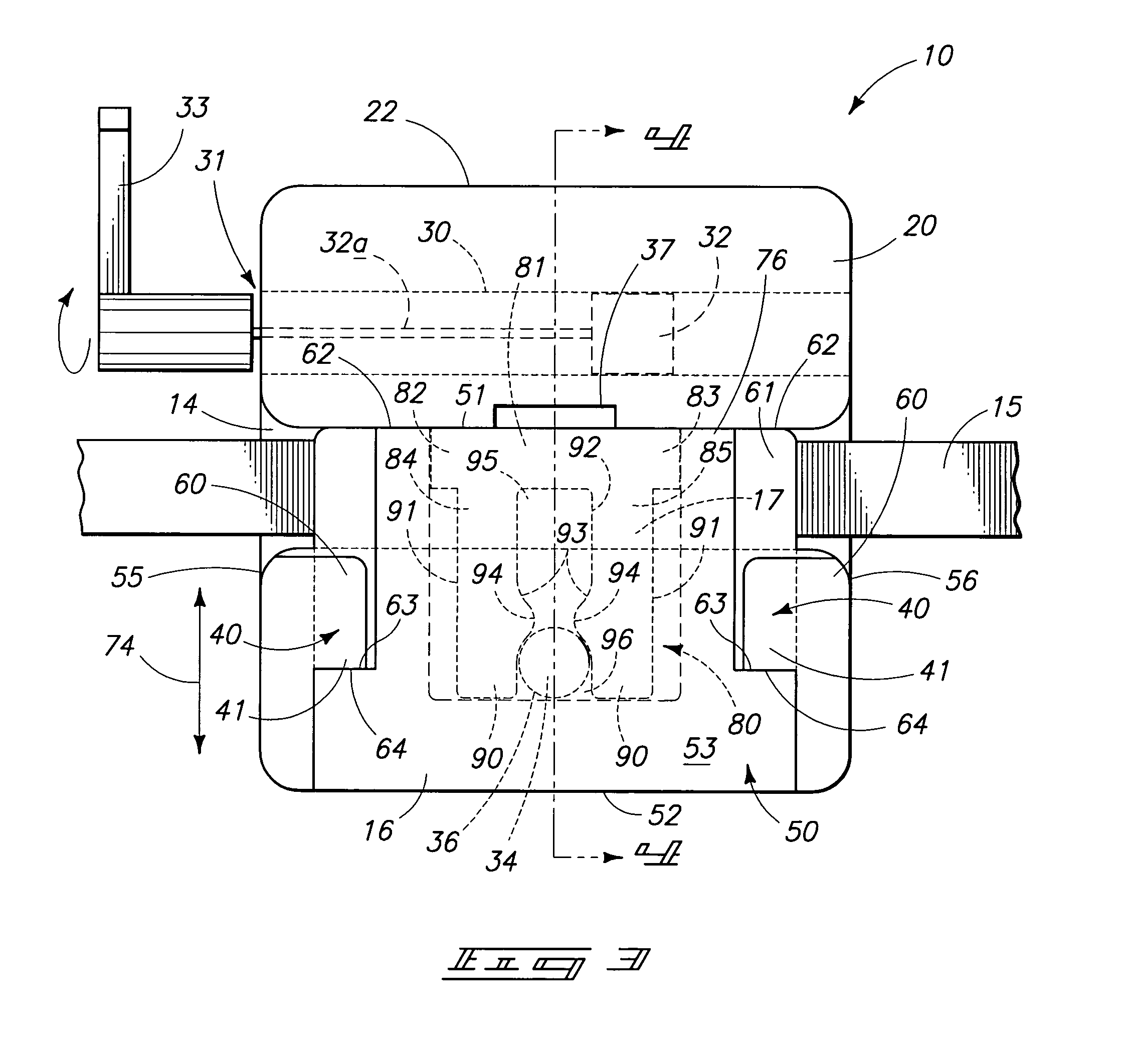Orthodontic bracket
a technology for orthodontic brackets and brackets, applied in the field of orthodontic brackets, can solve the problems of increasing the difficulty of fabricating and assembling orthodontic brackets of this type, detracting from their usefulness, and increasing the dimensional size of the resulting bracket, so as to facilitate passive self-ligation
- Summary
- Abstract
- Description
- Claims
- Application Information
AI Technical Summary
Benefits of technology
Problems solved by technology
Method used
Image
Examples
first embodiment
[0055]Five forms of a self-ligating orthodontic bracket are illustrated in the drawings. A first embodiment is shown in FIG. 1-10; a second form is illustrated in FIGS. 11-17; a third form is shown at FIG. 18; a fourth form is shown in FIGS. 21-25; and a fifth form is shown in FIGS. 26 and 27, respectively. Other inventive aspects of the present invention such as a novel orthodontic appliance to be employed in the various forms of invention (FIG. 19) are also shown in the various views, and will be discussed in greater detail in the paragraphs hereinafter.
[0056]The illustrated details of the orthodontic bracket of the present invention may be used in many different combinations within the scope of this disclosure. For this reason, the details of the illustrated orthodontic brackets, as described hereinafter, are intended to be interpreted as merely illustrative, and should not be taken as restrictive of the practical combinations of such features within the scope of this disclosure ...
second embodiment
[0069]The second embodiment of the orthodontic bracket of the present invention is generally indicated by the numeral 100 and is best seen by reference to FIGS. 11-17A, respectively. As seen therein, the second embodiment of the orthodontic bracket 100 is defined by a bracket body or base member 103 and which further defines a transversely disposed archwire slot 104 which is operable to receive an archwire 105 of traditional design. As earlier discussed, the archwire slot is shown in a transverse orientation relative to the bracket body or base member 103, however, it will be appreciated that the archwire slot 104 may be oriented in various orientations to achieve various clinical benefits for a patient. As seen in the drawings, the archwire slot 104 is substantially rectangular in shape, and is operable to receive a rectangular shaped archwire 105 of conventional design. The orthodontic bracket 100 includes a ligating slide 106 which moveably cooperates with the base member 103, an...
third embodiment
[0073]The third embodiment of the orthodontic bracket of the present invention is generally indicated by the numeral 200, and is best seen by reference to FIG. 18. As seen therein, the third embodiment of the orthodontic bracket 200 is defined by a bracket body or base member 203 and which further defines a transversely disposed archwire slot 204 which is operable to receive an archwire 205 of traditional design. As earlier discussed with respect to the first and second forms of the invention, the archwire slot 204 is shown in a transverse orientation relative to the bracket body or base member 203, however, it will be appreciated that the archwire slot 204 may be located in various orientations to achieve assorted clinical benefits for a patient. As seen in FIG. 18, the archwire slot 204 is substantially rectangular and is operable to receive a rectangular shaped archwire 205 of conventional design. The orthodontic bracket 200 further includes a ligating slide 206 which moveably co...
PUM
 Login to View More
Login to View More Abstract
Description
Claims
Application Information
 Login to View More
Login to View More - R&D
- Intellectual Property
- Life Sciences
- Materials
- Tech Scout
- Unparalleled Data Quality
- Higher Quality Content
- 60% Fewer Hallucinations
Browse by: Latest US Patents, China's latest patents, Technical Efficacy Thesaurus, Application Domain, Technology Topic, Popular Technical Reports.
© 2025 PatSnap. All rights reserved.Legal|Privacy policy|Modern Slavery Act Transparency Statement|Sitemap|About US| Contact US: help@patsnap.com



